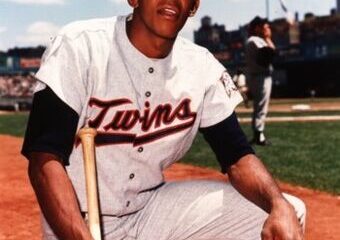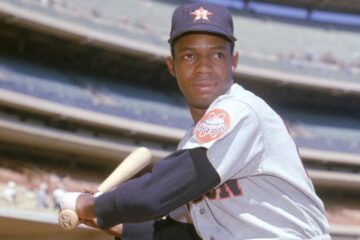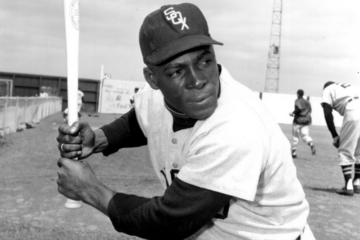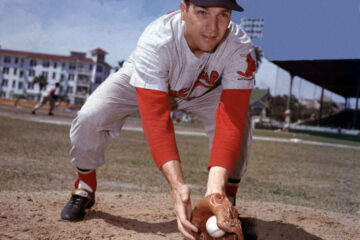The Hall of Fame Index: Robinson Cano vs. Ryne Sandberg and Bobby Grich
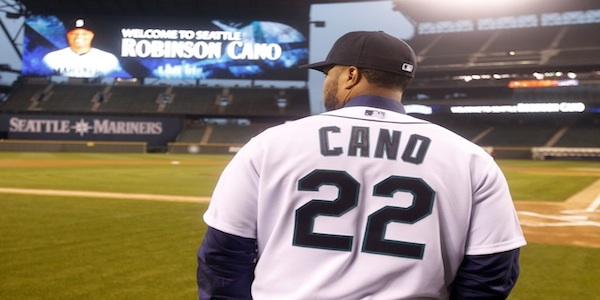
The Hall Fame Index Part IIwent beyond the first edition by breaking each position into tiers with the top 50 position players at each position. The idea behind that was to make it easier to compare players. After all, if someone finished with 317 index wins there is no telling what that actually means. However, if you could get a collection of players that are similar then you have a much clearer frame of reference.
Robinson Cano is obviously the best active second baseman, but his place in the history of the game is murky at best. That became reality when he got clipped for PED use in the 2018 season. Unfortunately, a singular suspension is never only about that single incident. There comes an assumption that use may have been sustained. So, the question of where Cano rates in the history of the game is not nearly as clear.
The index (nor any other comparison metric) was not designed to come with a sliding scale when it comes to PED use. We take the numbers at face value and go from there. Obviously, the BBWAA will have to make its call someday and far be it for me to tell them where they should land. However, we will take a look at two other very comparable players.
Career Value
| BWAR | FWAR | WS/5 | Total | |
| Bobby Grich | 71.1 | 69.1 | 65.8 | 206.0 |
| Ryne Sandberg | 68.0 | 60.9 | 69.2 | 198.1 |
| Robinson Cano | 68.0 | 57.3 | 68.8 | 194.1 |
I spent a great deal of time in the book talking about Grich. Simply put, if we asked the question of who is the most qualified player outside of the Hall of Fame, he would be a top contender. I may have used these exact terms, but he could be the Rosetta Stone between traditional analysis and the newer methods started by Bill James. If you look at the counting numbers you are left wondering what all the fuss is about. He combined good fielding, good power, and good patience to become a very good player for more than a decade.
The index often creates an “if…then” argument and that is where these comparison articles often take us. If Sandberg is a Hall of Famer then we could only surmise that Grich and Cano belong in as well. Of course, that all depends on factors beyond the index. For Cano, we have to add in the suspension. However, we have to include the offensive, fielding, postseason, and MVP breakdowns as well.
Peak Value
| BWAR | FWAR | WS/5 | Total | Index | |
| Sandberg | 56.7 | 51.6 | 55.6 | 163.9 | 362.0 |
| Grich | 55.4 | 52.3 | 47.8 | 155.5 | 361.5 |
| Cano | 57.6 | 47.9 | 55.0 | 160.5 | 354.6 |
So, the obvious point here is that these three players are very similar when we combine career and peak value. Cano’s peak value will not change no matter how long he continues to play, so you can see these three will likely be linked together even if Cano plays another five seasons. However, as we saw with Pujols, the rest of his numbers we will see from here will likely be negatively affected. That is part of the Faustian bargain of playing years past your prime.
The tight distribution of scores here is important. If we all agree that Sandberg deserves his place, then it is hard to deny Grich his place. Cano can still add to his career value, so he might end up being a part of a more exclusive group when all is said and done. When we look at the other numbers, we might get a clue as to why Sandberg got in while the others didn’t.
Offensive Numbers
| OPS+ | Rbaser | OW% | wOBA | |
| Grich | 125 | 4 | .609 | .361 |
| Cano | 125 | -6 | .599 | .360 |
| Sandberg | 114 | 33 | .620 | .351 |
These numbers demonstrate a few things at the same time. First, the players are similar in career and peak value because they are similar offensively. The value portion comes in the second point. As we see, Sandberg trails in OPS+, but his additional value in baserunning helps pick up the slack when we look at offensive winning percentage. Putting all of these numbers together not only helps us understand all of the individual components and skills, but how they interact in overall value.
The third point is something we saw with Albert Pujols. These numbers are valuable, but they don’t include the dimension of time. Sandberg and Grich had relatively short careers by Hall of Fame standards. Cano might have two or three full seasons left (assuming there is a 2020 season). His OPS+ might end up being closer to Sandberg than Grich when he is finally done. That’s even assuming he adds additional value in the index. That’s part of the trade-off of adding counting numbers and index wins.
Some of these numbers are easier to interpret than others. The beauty of all of them is that when you put up similar players it becomes easier to interpret because you have a picture of at least one of these players in your head. For the older crowd you might be able to picture all three.
Fielding Numbers
| Rfield | DWAR | TZ2B | DWS/5 | |
| Grich | 82 | 16.8 | 71 | 18.8 |
| Sandberg | 60 | 13.5 | 57 | 18.7 |
| Cano | 5 | 7.2 | -24 | 20.6 |
Two things come through here when we look at these numbers. First, I think more than a few people come away shocked when Grich looked better than Sandberg in terms of fielding value. Sandberg won nine Gold Gloves in his career to Grich’s four. That by itself aids in Sandberg’s reputation, but it’s a double-edged sword. Sandberg played on WGN where everyone was able to watch. So, he earned that reputation through exposure while Grich toiled in obscurity in Baltimore and Anaheim. Sandberg probably won those additional Gold Gloves because he played on WGN.
Cano’s defensive career has been inconsistent to the point of being bizarre. He has four seasons with 10 or more fielding runs and then another four with -7 or worse. I’m sure that will create a perception that he did not always care about his craft. I’m not sure if that is a fair criticism, but that kind of inconsistency is not something we see normally. Like with offense, these overall numbers are not likely to get better as he ages.
Playoff Numbers
| PA | Slash | HR | Runs | RBI | |
| Cano | 217 | .222/.267/.419 | 8 | 22 | 33 |
| Grich | 98 | .182/.247/.318 | 3 | 5 | 9 |
| Sandberg | 47 | .385/.457/.641 | 1 | 9 | 6 |
Here is where the rubber meets the road for many casual fans. What did you do when the chips were down? However, to borrow from the gambling analogy, do we judge poker players by how two or three hands turn out? Sandberg played in two league championship series. His Cubs lost both of those. It wasn’t his fault obviously, but how much extra credit do we give him for performing well?
Grich obviously played in a few more and his teams never won the World Series. If he had played to regular season standards would they have won? I suppose you could argue that. Then again, how much are you going to hold postseason failure against him when you are talking about fewer than 30 postseason games?
Cano’s Yankees did win the 2009 World Series, but most of his tenure in New York was known for them not living up to expectations. Still, he was terrible when they won (hitting .136 in the 2009 World Series) and brilliant sometimes when they lost (hitting .348 with 4 home runs in the 2010 ALCS) so I’m not sure of how you look at these numbers. They are important, but they shouldn’t overshadow the overall numbers.
BWAR MVP Points
| Top 10 | Top 5 | MVP | Total | |
| Grich | 2 | 4 | 1 | 36 |
| Sandberg | 2 | 3 | 1 | 31 |
| Cano | 0 | 6 | 0 | 30 |
Serendipity is a thing. Sabermetrics and in-depth statistics can tell us a number of things but it can’t tell us exactly when you succeed. Sandberg was at his best when a convergence of events happened in his favor. The Cubs were one of two teams (the Braves on TBS) that played before millions of eyes on basic cable. His team was at its best as it came within one game of the World Series. So, he won the 1984 MVP award going away. It should be noted that Dale Murphy won the 1982 and 1983 awards playing on the other superstation. It probably wasn’t a coincidence.
Grich was the best player in the American League in 1973. His Orioles won the AL East that season but were overshadowed by the Athletics in the West. He would finish in the top five a few times during that period, but the Orioles were always overshadowed by Reggie Jackson and the A’s. He would finish in the top five again in 1981 and tie for the league lead in home runs during a strike shortened season. Consider it serendipity in reverse.
Obviously, Cano has never been the best player in the league and likely won’t ever be, but he finished in the top five more often than both Grich and Sandberg. If he had paid consistent attention to his fielding he might have had a shot, but we will have to consider it a weakness. All in all, he finds himself in a similar position as these other two and if that is any indication then he will likely deserve a trip to Cooperstown.


